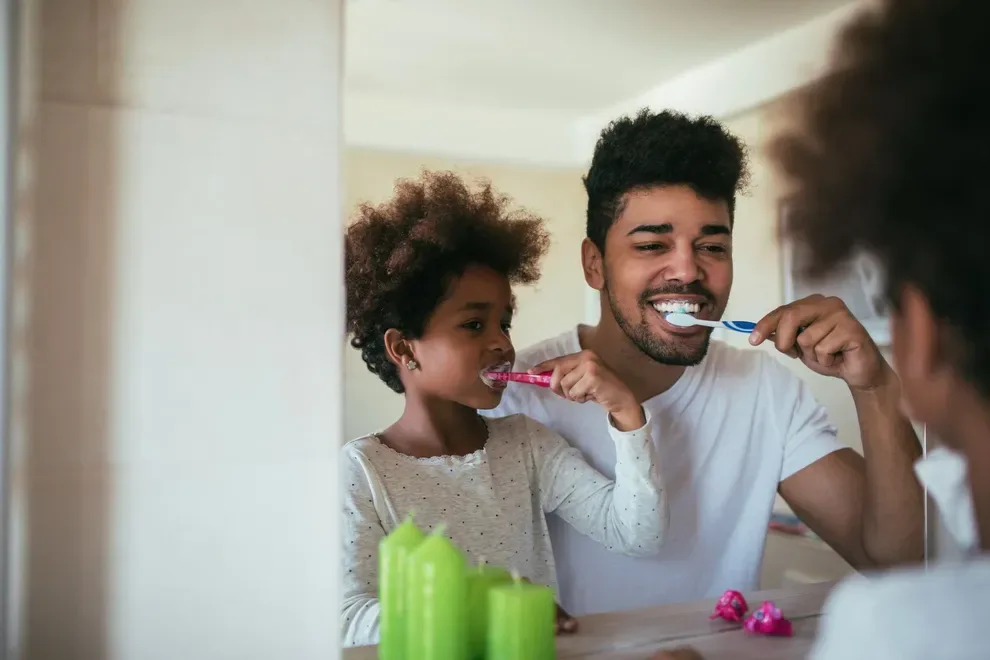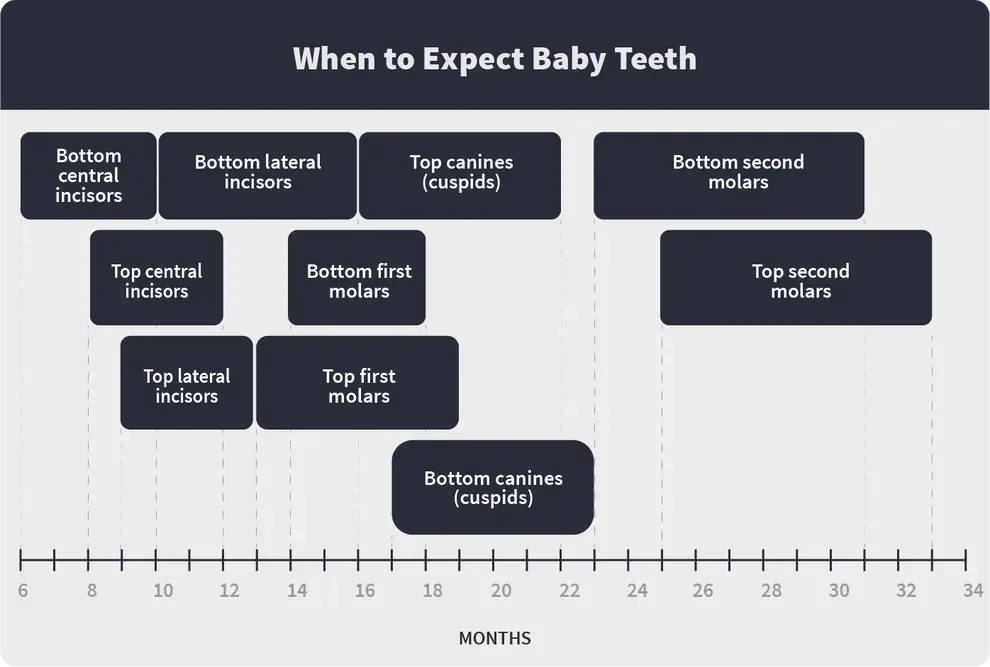Baby Teeth: When Will They Come & How Long Will They Last?

Table of Contents
- When to Expect Baby Teeth
- How Long Do They Last
- Adults & Baby Teeth
- What to Do About Missing Adult Teeth
You will typically have two sets of teeth in your lifetime: your primary (baby) teeth and your permanent (adult) teeth.1
Babies are born with a set of 20 teeth that sit below the gumline. They usually start to come in around 6 months of age. The teething process can last up until a child’s 3rd birthday.
Right around the time a child starts school, usually age 5 or 6, the first adult teeth will start to come in and push the baby teeth out of the way. Generally, children have 28 of their total set of 32 teeth by their 13th birthday. They get the last four (wisdom teeth) prior to turning 21.
Usually, all of the baby teeth are gone by adolescence, but in some cases, they will stick around if there are no adult teeth to replace them. If you are missing permanent teeth, a dentist can help you build a successful plan to manage the issue.

When to Expect Baby Teeth
There is a time range when it comes to teething, but most babies will start this process around 6 months old.
Teething is when the baby teeth come in, or erupt, through the gums. This generally happens one or two teeth at a time. The first baby tooth can come in as early as 4 months old or as late as after a baby’s 1st birthday. In fact, some babies are even born with teeth.
In general, you can expect baby teeth to come in roughly the following order:2
Bottom central incisors: 6 to 10 months
Top central incisors: 8 to 12 months
Top lateral incisors: 9 to 13 months
Bottom lateral incisors: 10 to 16 months
Top first molars: 13 to 19 months
Bottom first molars: 14 to 18 months
Top canines (cuspids): 16 to 22 months
Bottom canines (cuspids): 17 to 23 months
Bottom second molars: 23 to 31 months
Top second molars: 25 to 33 months
Typically, most children will have all 20 of their primary teeth by 30 months old.
How Long Do Baby Teeth Last?
Primary teeth will start to fall out, or shed, as the adult teeth develop and come in. This usually starts around the time a child turns 6. The majority of the 28 permanent teeth are typically in place by age 13.
The wisdom teeth come in later, generally between the ages of 17 and 21. These make up the final four teeth to bring the total to 32 adult teeth.
Baby teeth, therefore, will last around six to eight years each. The baby teeth usually fall out just before a permanent tooth erupts, as an adult tooth pushes a baby tooth out of the way.
The first permanent teeth to come in are generally the first molars in the back of the mouth. These are “extra” teeth, so they do not push baby teeth out of the way.
The following is the order permanent teeth typically erupt in:
Top and bottom first molars: 6 to 7 years
Bottom central incisors: 6 to 7 years
Top central incisors: 7 to 8 years
Bottom lateral incisors: 7 to 8 years
Top lateral incisors: 8 to 9 years
Bottom canines (cuspids): 9 to 10 years
Top canines (cuspids): 10 to 11 years
Top first premolars (first bicuspids): 10 to 11 years
Bottom first premolars (first bicuspids): 10 to 12 years
Top second premolars (second bicuspids): 10 to 12 years
Bottom second premolars (second bicuspids): 11 to 12 years
Bottom second molar: 11 to 13 years
Top second molar: 12 to 13 years
Adults & Baby Teeth
It is common for adults to be potentially missing one to two permanent teeth, especially second premolars or upper lateral incisors. When permanent teeth are replacing baby teeth, they push them out of the way as they come in. If a permanent tooth does not come in where a baby tooth is, it is also possible for the baby tooth to stay put.
The baby tooth’s root generally will not dissolve without the presence of a permanent tooth. In some cases, the baby tooth can stay into adulthood.
One or two baby teeth in an adult is not a cause for concern. However, if many permanent teeth are missing, it can signal a bigger issue and may require dental treatment.
What to Do About Missing Adult Teeth
When permanent teeth are missing, this is called agenesis. In rare conditions, it is called anodontia (missing all teeth), hypodontia (missing between one and five teeth), or oligodontia (missing more than six teeth). These are typically genetic conditions.3
In the case of these uncommon conditions, with multiple missing permanent teeth, a dental intervention and treatment plan are necessary.
A dentist, and often a set of specialists, will need to work with you if you are missing multiple adult teeth. They will develop a treatment plan that may include the following:
Dental implants
Dentures
Dental bridges
Dental crowns
Your specific treatment plan will depend on which teeth are missing, how many, your age, and the state of your oral health.
